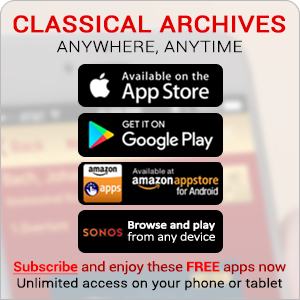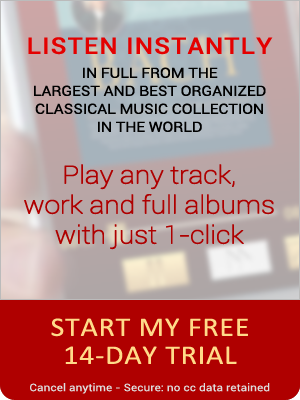period: Baroque
 The French word baroque means misshapen pearl, which suggests the generally ornate and stylized approach to works of art, architecture, and music during these years. This is the period that saw the birth of opera, as well as the rise of purely instrumental forms such as the concerto and sonata; it is also the period in which modern-day harmony (major and minor keys, modulation, etc.) was developed. Musically, this was a tremendously dynamic and experimental period, one in which the expression of human emotion became a primary goal of musical creation - often subsumed under the phrase "doctrine of affections". Given the length of the era, it is hard to speak of a single musical thread that runs throughout, with the possible exception of the thoroughbass or Continuo accompaniment (generally harpsichord and cello or double bass) that is found in works ranging from the operas of Claudio Monteverdi to the concertos of J.S. Bach, and it may be easier to divide the Baroque into three sub-periods: Early (c.1600-1650), in which the chromaticism and instrumental experiments of the late Renaissance were richly and freely continued; Middle (c.1650-1700), which saw the rise of such prominent genres as the trio sonata and the da capo Aria; and Late (c.1700-1750), in which the more familiar genres of the sonata and concerto came into being, and reached tremendous heights in the works of the 3 masters all born in 1685: J.S. Bach, George Frideric Handel, and Domenico Scarlatti. The highly stylized and elaborate nature of the musical discourse in these later years eventually gave rise to a reaction among younger composers, leading to a new style developing in the 1730s and 40s - and into a new era we call the Classical period.
The French word baroque means misshapen pearl, which suggests the generally ornate and stylized approach to works of art, architecture, and music during these years. This is the period that saw the birth of opera, as well as the rise of purely instrumental forms such as the concerto and sonata; it is also the period in which modern-day harmony (major and minor keys, modulation, etc.) was developed. Musically, this was a tremendously dynamic and experimental period, one in which the expression of human emotion became a primary goal of musical creation - often subsumed under the phrase "doctrine of affections". Given the length of the era, it is hard to speak of a single musical thread that runs throughout, with the possible exception of the thoroughbass or Continuo accompaniment (generally harpsichord and cello or double bass) that is found in works ranging from the operas of Claudio Monteverdi to the concertos of J.S. Bach, and it may be easier to divide the Baroque into three sub-periods: Early (c.1600-1650), in which the chromaticism and instrumental experiments of the late Renaissance were richly and freely continued; Middle (c.1650-1700), which saw the rise of such prominent genres as the trio sonata and the da capo Aria; and Late (c.1700-1750), in which the more familiar genres of the sonata and concerto came into being, and reached tremendous heights in the works of the 3 masters all born in 1685: J.S. Bach, George Frideric Handel, and Domenico Scarlatti. The highly stylized and elaborate nature of the musical discourse in these later years eventually gave rise to a reaction among younger composers, leading to a new style developing in the 1730s and 40s - and into a new era we call the Classical period.

Nolan Gasser, PhD
Artistic Director













